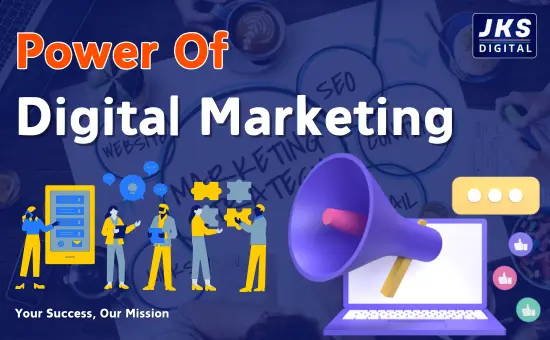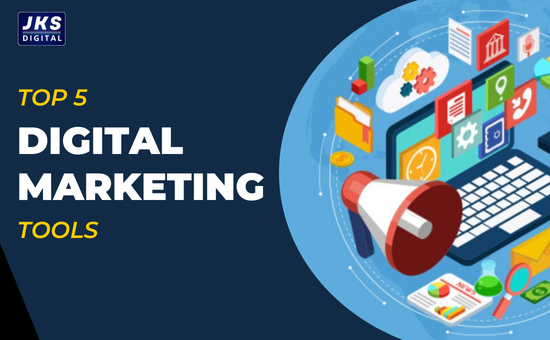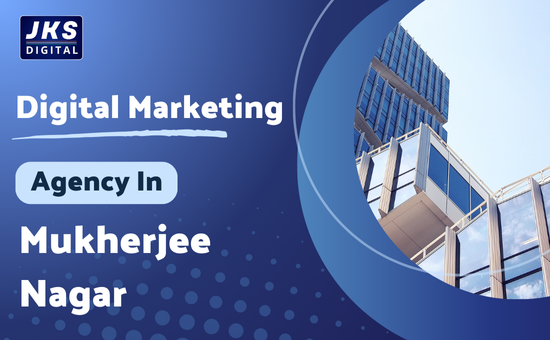Digital marketing has redefined how businesses engage with their audiences, transforming traditional marketing methods into dynamic, data-driven strategies. This article explores the power of digital marketing by examining its features, benefits, and, most importantly, real-life case studies that showcase its effectiveness. With a focus on how different brands harnessed this tool to achieve remarkable results, let’s uncover why digital marketing has become indispensable in today’s business world.

Understanding the Power of Digital Marketing
The digital landscape provides marketers with extensive tools to engage, convert, and retain customers. Unlike traditional marketing, digital marketing is interactive, trackable, and adjustable. From social media and email marketing to SEO and content creation, digital marketing’s reach is unparalleled. What truly sets it apart, though, is its adaptability and potential to produce measurable results across diverse channels.
Key Features of Digital Marketing
- Targeted Audience Reach: Digital marketing allows brands to target specific demographics, interests, and behaviors, ensuring campaigns reach people most likely to convert.
- Cost-Effectiveness: Compared to TV ads or print media, digital marketing offers budget-friendly options, especially for small and medium-sized businesses.
- Measurable Results: Every click, view, and conversion can be tracked, making it easy to evaluate a campaign’s success.
- Real-Time Engagement: Digital platforms enable businesses to interact directly with customers, responding to their needs and building strong relationships.
- Data-Driven Strategy: With access to in-depth analytics, brands can continuously optimize their campaigns for better performance.
- Global Reach: Digital marketing transcends borders, allowing businesses to engage with audiences worldwide.
Read Also – Digital Marketing Strategies for Small Businesses: JKS Digital
Case Studies: Real-Life Examples of Digital Marketing Success
Case Study 1: Coca-Cola’s “Share a Coke” Campaign
Objective: Increase brand engagement by creating a personalized experience.
Strategy: Coca-Cola launched the “Share a Coke” campaign, replacing its logo on bottles with popular names to encourage consumers to find their name or a friend’s and share it on social media. This personalization strategy tapped into the power of social sharing, leveraging both digital and traditional media.
Results:
- Coca-Cola reported a 2% increase in sales after a decade of declines.
- Social media engagement soared, with consumers posting millions of photos using the hashtag #ShareaCoke.
Key Takeaway: Personalization combined with social media can foster strong brand loyalty and engagement. Coca-Cola demonstrated that connecting with consumers on a personal level makes them more likely to engage and advocate for the brand online.
Read Also – Top AI Tools That Can Be Game-Changers for Digital Marketers
Case Study 2: Airbnb’s Content Marketing Strategy
Objective: Build trust and brand authority within the travel industry.
Strategy: Airbnb focused on content marketing by creating a blog called “Airbnb Magazine,” featuring travel guides, local insights, and real-life stories from hosts and guests. This approach showcased their brand as not just an accommodation provider but an expert in authentic travel experiences.
Results:
- Airbnb’s blog attracted millions of readers and positioned them as a travel authority.
- Organic traffic and brand visibility significantly increased, and booking rates surged as trust in the brand grew.
Key Takeaway: High-quality content establishes brand credibility and connects emotionally with audiences. By offering valuable, engaging information, Airbnb built trust and grew their customer base without directly selling.
Case Study 3: Nike’s Influencer Marketing Campaign
Objective: Boost brand awareness and drive sales among younger demographics.
Strategy: Nike collaborated with influencers on Instagram to launch their new Air VaporMax shoes. They enlisted influencers with millions of followers to showcase the product, making it instantly visible to a vast audience.
Results:
- Nike experienced a massive spike in social media engagement and product interest.
- Sales skyrocketed, with the Air VaporMax quickly selling out in multiple regions.
Key Takeaway: Partnering with influencers who align with the brand’s image can amplify reach and drive significant engagement. Nike’s campaign highlighted how influencer marketing can effectively tap into new customer segments.
Read Also – Benefits of Google My Business Listing For Businesses
Case Study 4: Domino’s Pizza’s App-Driven Approach
Objective: Simplify the ordering process and attract tech-savvy customers.
Strategy: Domino’s developed an app allowing customers to order pizza in just a few clicks. They also launched the “Domino’s AnyWare” campaign, enabling orders through various platforms like Twitter, smart TVs, and smartwatches. This innovative approach resonated with digitally inclined consumers.
Results:
- Domino’s saw a 19% increase in sales through digital channels.
- They became a leader in the fast-food industry, leveraging technology to improve the customer experience.
Key Takeaway: Utilizing digital technology to simplify user experience can drastically boost sales. Domino’s creative approach set them apart as a tech-savvy brand, fostering customer loyalty.
Case Study 5: Sephora’s Omnichannel Marketing Success
Objective: Provide a seamless shopping experience across both online and offline channels.
Strategy: Sephora implemented an omnichannel approach, integrating digital features in stores, such as iPad-equipped makeup stations, virtual artist tools, and online loyalty programs that synced with in-store purchases. This strategy made the shopping experience engaging and convenient across all touchpoints.
Results:
- Customer satisfaction and loyalty improved, with a significant increase in repeat purchases.
- Sephora’s loyalty program gained millions of active members, further enhancing brand loyalty.
Key Takeaway: An omnichannel strategy can create a cohesive brand experience, meeting customer needs wherever they are. Sephora showed that bridging the online and offline worlds keeps customers engaged and encourages repeat business.
Read Also – Best Top 5 Websites to Create YouTube Thumbnails
Conclusion
The power of digital marketing lies in its ability to adapt, engage, and deliver measurable results. Through targeted strategies, brands can connect with customers in meaningful ways, generating loyalty and driving sales. These case studies illustrate that with the right digital marketing strategy, any brand can harness its power to achieve remarkable outcomes.
Whether you’re a small business or a global brand, embracing digital marketing opens doors to new opportunities, audiences, and growth. As the case studies of Coca-Cola, Airbnb, Nike, Domino’s, and Sephora demonstrate, digital marketing not only enhances brand visibility but also plays a pivotal role in shaping the customer journey.




